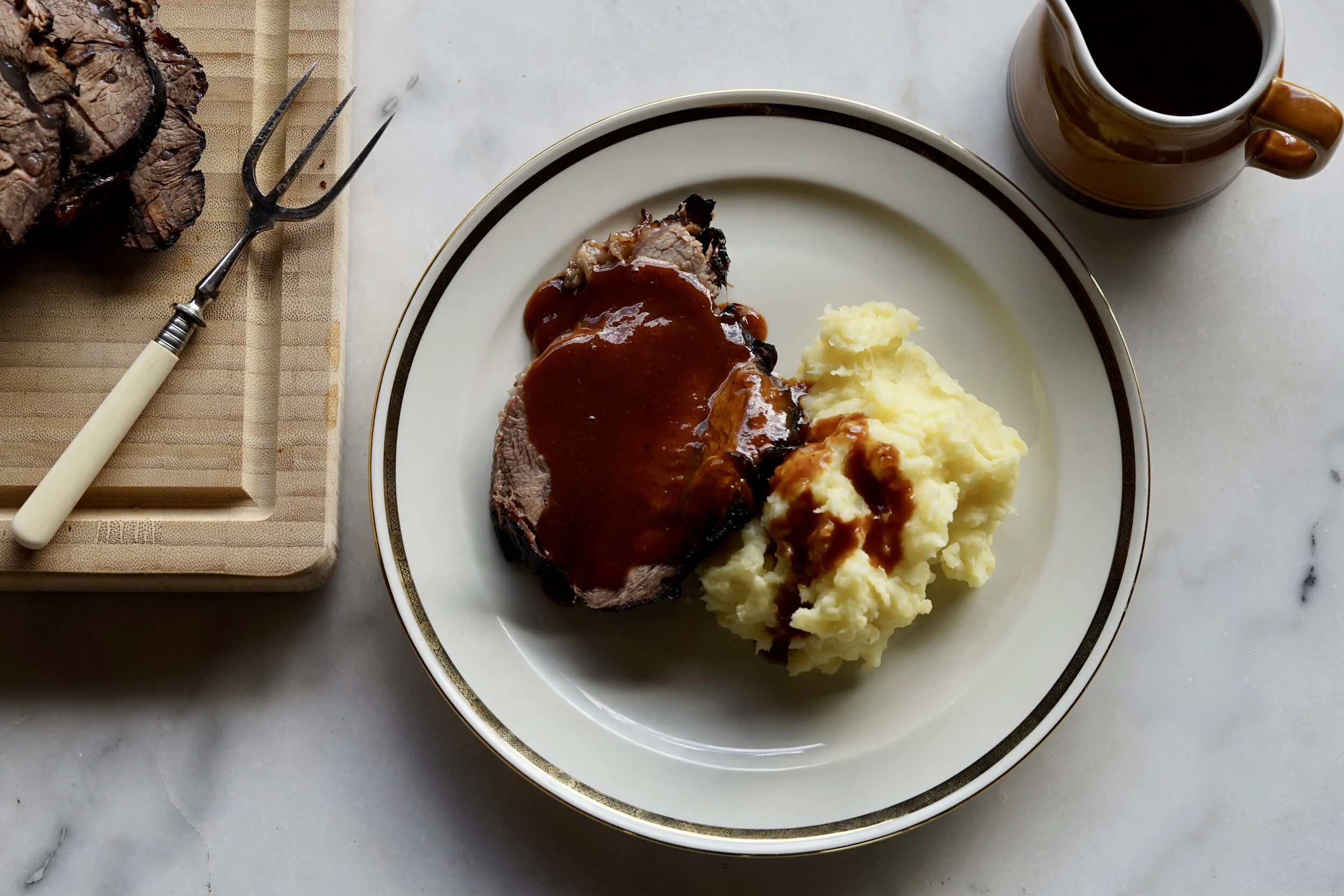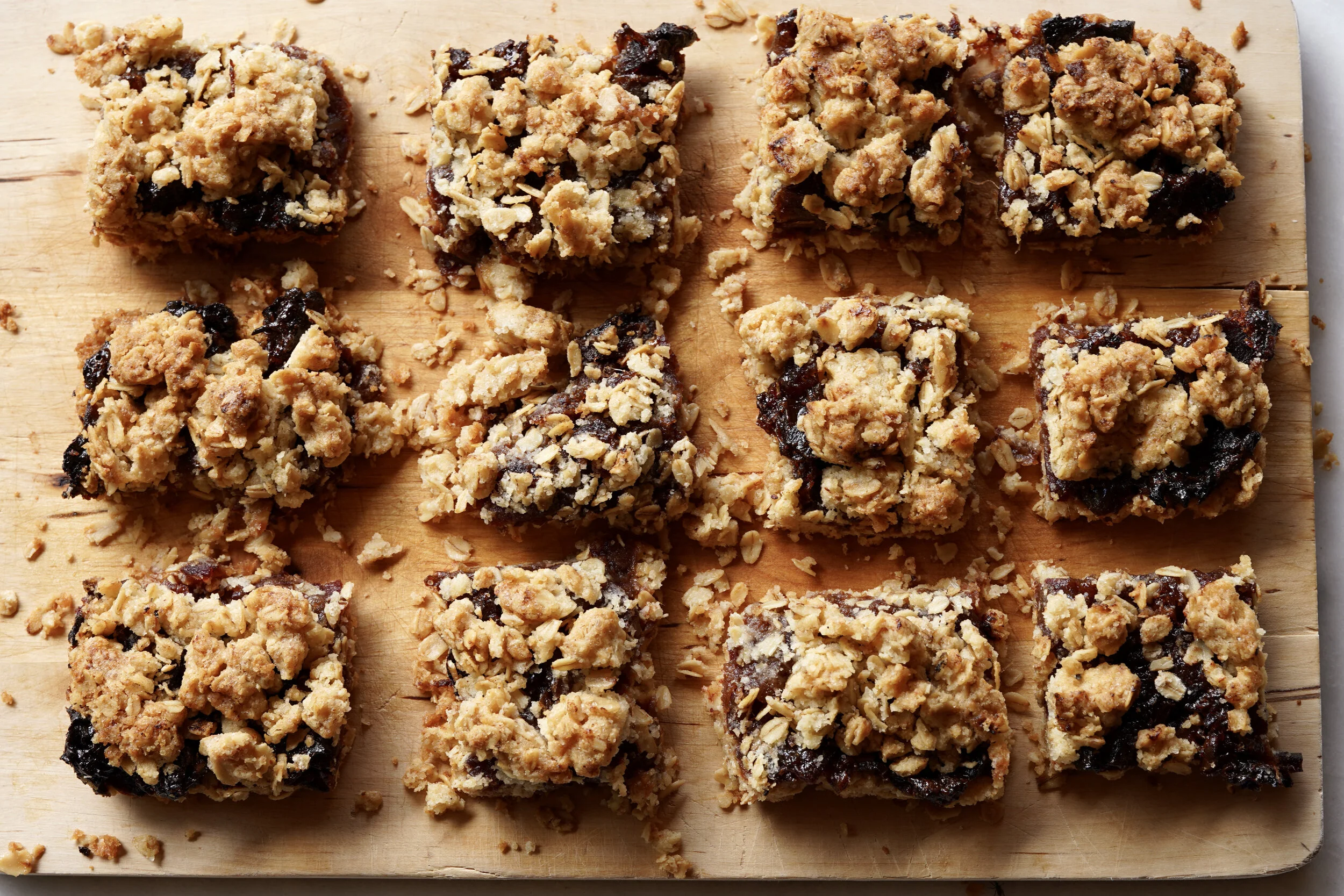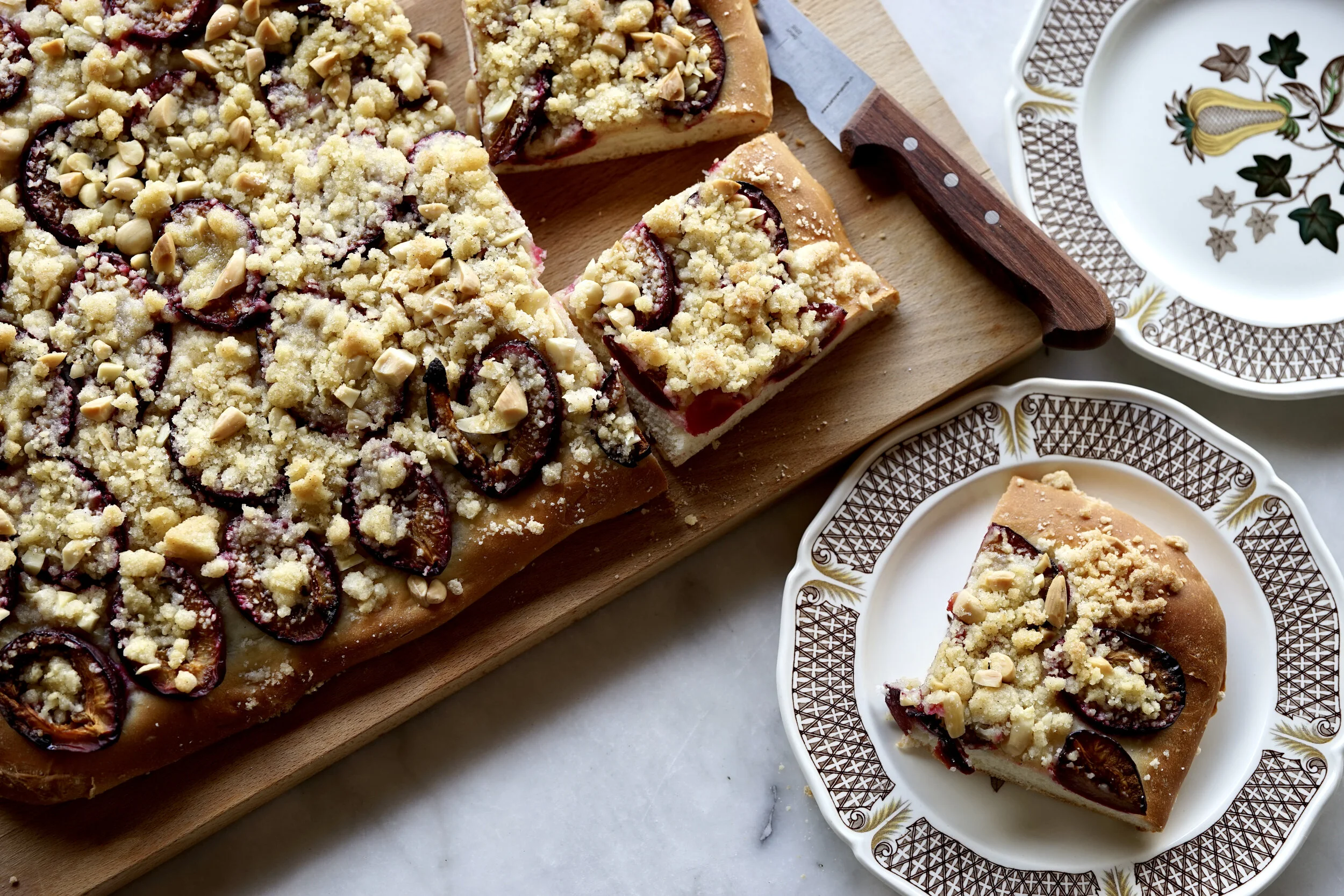Suure Mocke
Suure Mocke, braised beef with a slightly sweet and tangy sauce, is the Swiss version of Sauerbraten, sour roast, where the sour part comes from a long soak in vinegar and red wine.
Beloved in many regions of Switzerland, this is a dish that feels at home plated next to a pillowy pile of Härdöpfustock, mashed potatoes, and served in the warm Stube of a gemütlich Emmentaler Gasthof or at Grosi’s house.
Search online and you’ll find the Suure Mocke domain, www.suuremocke.ch, which brings you to the home page of the Gasthof zum Brunnen in Fraubrunnen, who claim to make ‘Dr Bescht vor Wält!?’ the best Suure Mocke in the world.
(Don’t let their retro homepage fool you, their Suure Mocke master Alex Rufibach provides his recipe not only right there on their website, but also to Gault & Millau here, who have awarded him 14 points.)
Recipes abound—two of my favourite Swiss food bloggers have versions, lamiacucina from 2008, and Kitchwitch, who (ideally) soaks her beef for a week.
Another Emmentaler Gasthof, the Löwen in Heimiswil, has their own ‘best in the world’ version by chef Daniel Lüdi, after his grandmother’s recipe. My favourite bit of Surre Mocke wisdom online comes from the Elisabeth Fülscher website, that interviews Julie Landis (author of books on tomatoes, zucchini, onions and even figures made from salt dough) on the ins and outs of Mocke making.
Making your own Suure Mocke takes a little bit of planning, but it isn’t too complicated and it’s a good excuse to visit your local Swiss butcher, who will be happy to give you a nice cut.
For the marinade
750 ml red wine
250 ml red or white wine vinegar
1 carrot, chopped
1 onion, chopped
5 peppercorns
5 cloves
1 bay leaf
around 1 kg beef (Runder Mocken)
For the braising
2 tbsp olive oil
salt and pepper
2 tbsp tomato paste
1 tbsp sugar
For the sauce
2 tsp cornstarch
3 tbsp cold water
salt and pepper
For the marinade:
In a large pot, add the wine, vinegar, carrot, onion, and seasonings. Bring to a boil and let simmer for a few minutes, then take off the heat. Let cool.
Place the meat in a large bowl and add the cooled marinade.
Cover, place in the fridge or a very cold cellar, and let marinate for a minimum of four days and up to a week, turning the meat every day or so.
When you are ready to braise:
Preheat oven to 150 C / 300 F / gas mark 2.
Remove the meat from the marinade, pat it dry, and set aside.
Strain the liquid into a pot, discard the bay leaf, peppercorns, and cloves and set the vegetables aside for later. Bring the marinade to a boil. There will be some white/grey foam, just skim this off. Set aside.
In a large dutch oven, heat the olive oil over high heat. Salt and pepper the meat, then brown well in the pot until it forms a nice crust (around 5-8 minutes). Remove from the the pot and set aside.
Add the vegetables to the pan and brown them, then add the tomato paste and sugar. Add about a third of the marinade back to the pot and scrape the bottom well. Pour in the rest of the marinade, bring to a boil, then remove from heat.
Place the meat in the dutch oven, cover and place in the oven.
Cook for about three hours, turning the meat a 2-3 times during cooking.
Remove the dutch oven, take out the meat, cover it and let it rest on a cutting board.
To make the sauce:
Strain the marinade into a small pot.
(Optional step: I used an immersion blender to pure the marinade with the remaining vegetables, then strained it—you can do this, or simply strain and discard the veg without pureeing.)
Using a flat spoon, skim the fat off the top of the marinade (you can also do this with a gravy separator). Then bring to a boil over medium high heat.
In a small bowl, mix together the cornstarch and cold water (no lumps), then slowly whisk it in to the simmering marinade. Keep whisking while it thickens, then remove from heat and season with salt and pepper.
Slice the meat, pour over the warm sauce and serve immediately.
In German speaking Switzerland, the cut of beef will be a kind of Rindsbraten/Rindsschmorbraten (beef roast) and good choices for this dish would be Runder Mocken, Runde or Flache Nuss. In North America this would be from the ‘round’ the rump of the cow (in the UK this is called the thick flank). You can also use Rindsschulter (my butcher suggested this and we really like it). Your best bet is to ask a butcher what they would recommend for SuureMocke/Sauerbraten. For more on Swiss cuts of beef, see my post here.
A nice Swiss Dôle or light Pinot Noir would work well as the marinating liquid here.
I left the meat in the marinade for a week. Recipes vary—some barely marinate, taking it out after two days, while others swear by a full ten.
Serve this with mashed potatoes.
More meat?
Nidwaldner Bohneneintopf















